While reading a very interesting book about Greek pies, named Handmade pies by Kostis Kostakis, published by Psichogios Publications, we found a special recipe from Karpathos island which we absolutely wanted to try. So, we decided to take one of our mental, sweet trips, with our rolling pins as a vehicle, to this remote island. In our new, sweet article we will study the gastronomy of Karpathos, its traditional savory and sweet recipes, and we will make Karpathos pies with mizithra cheese, honey and cinnamon… Get on board, the ship is sailing!
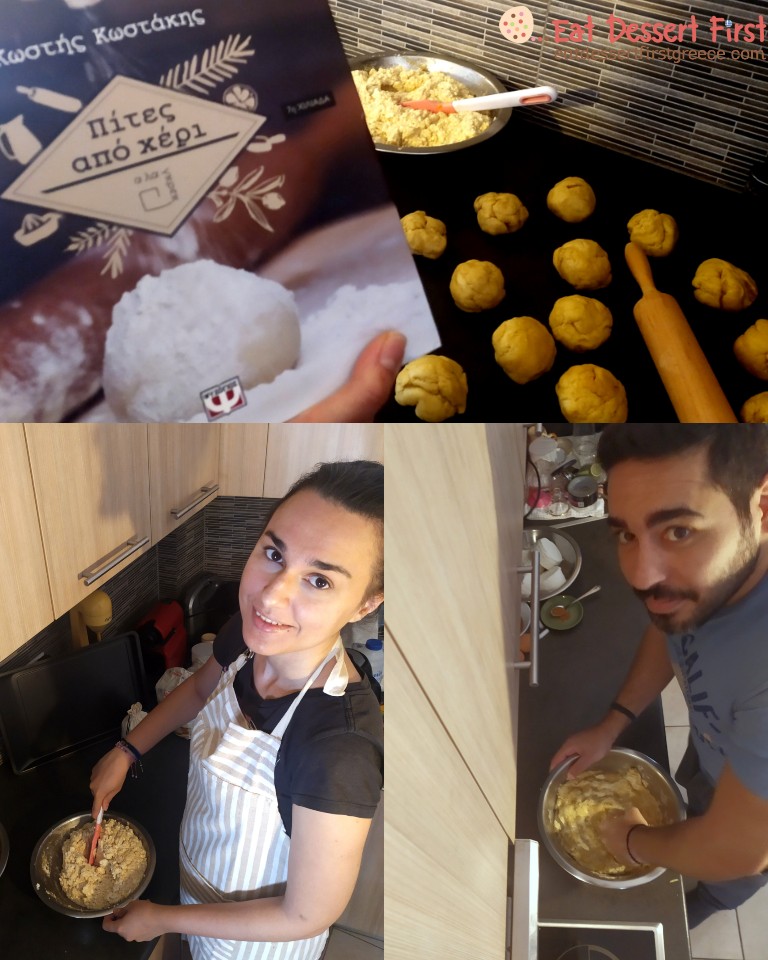
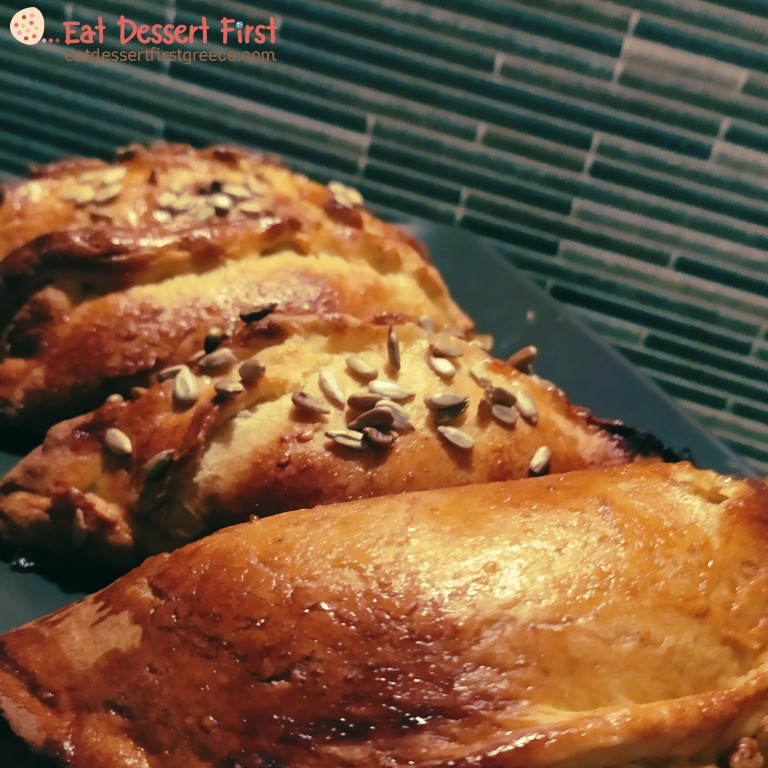
Karpathos is a remote island in the Dodecanese, the second largest after Rhodes. According to the website of the Municipality of Karpathos, the island has been inhabited since the Neolithic era. In ancient times, Karpathos had a Minoan character and took part in the Trojan war. During the Classical and Hellenistic period it flourished economically and culturally, mainly thanks to its trade and cultural relations with the cities of Rhodes.

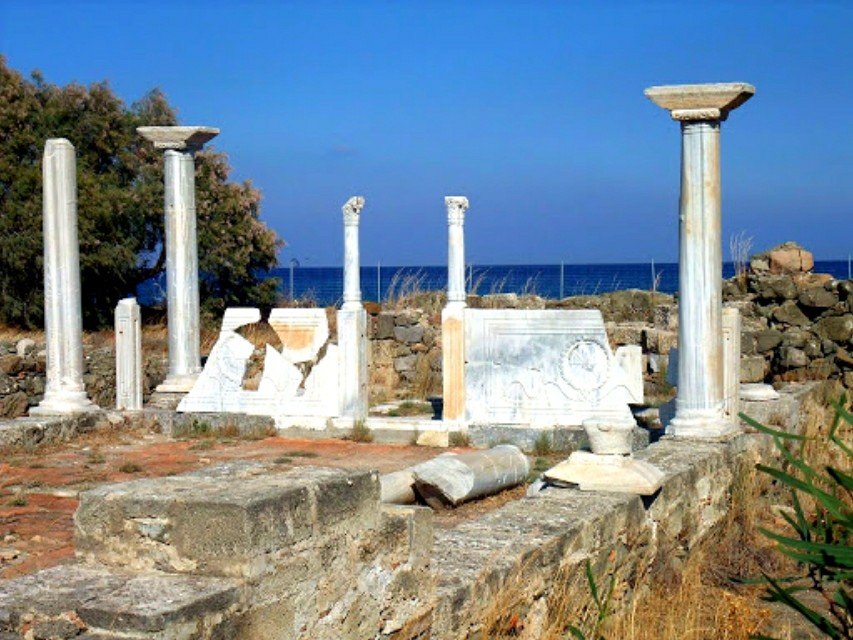
In Roman times, the island was of strategic importance, as it was one of Rome’s three largest naval bases in the Mediterranean. However, from the 7th to the 10th century, the island was devastated attacks of pirates from North Africa and Asia. Later, Karpathos became a place of competition between the Byzantines, Genoese, the Order of the Knights of St John and Venetians, the latter prevailing until the 16th century. Then, the island passed into the Turks’ hands.
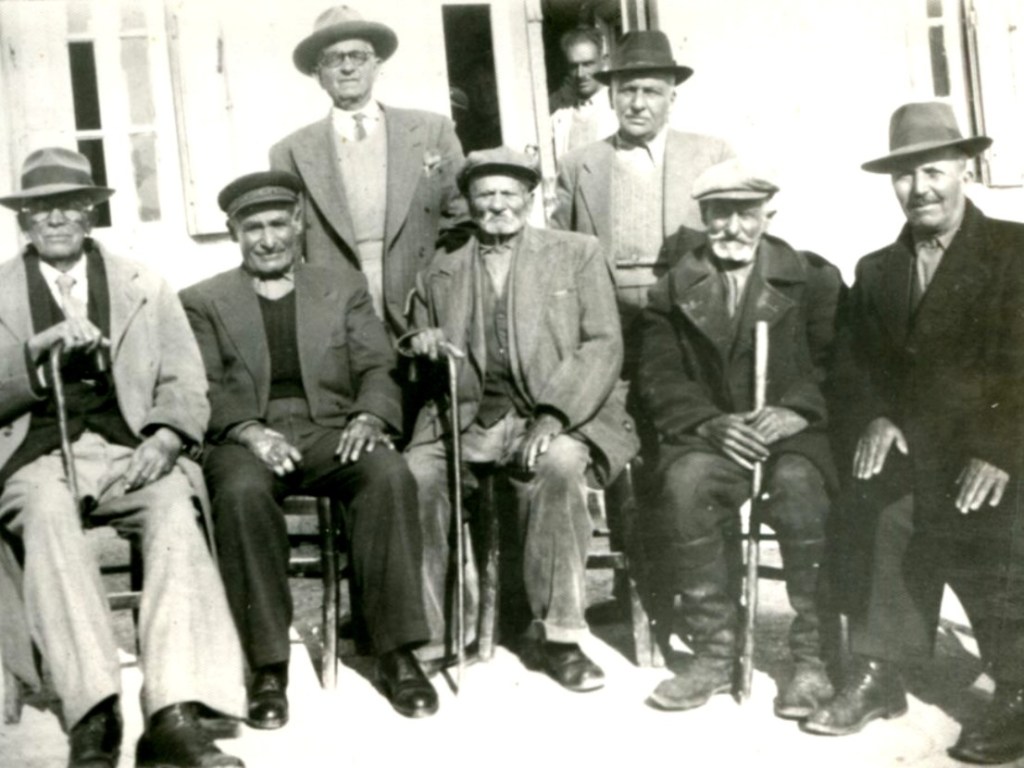
In 1821 the Carpathians revolted, but remained under Turkish occupation until 1912, when it passed into Italian hands. In 1944, the Carpathians uprised and called on the British allies, who in turn occupied the island. In 1948, Karpathos was finally incorporated into the Greek state together with the rest of the Dodecanese islands.
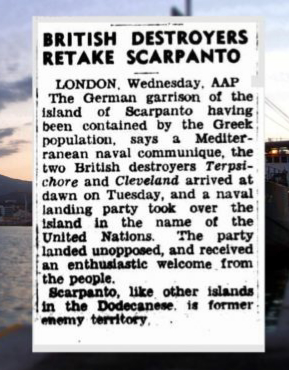
This long-suffering history definitely influenced the island’s gastronomy, being part of its culture. The cuisine of Karpathos was based on the ingredients of its fertile land, grapes, citrus fruits, oil and honey. Let’s see some of its typical dishes, to see how they incorporate the island’s tradition and history.
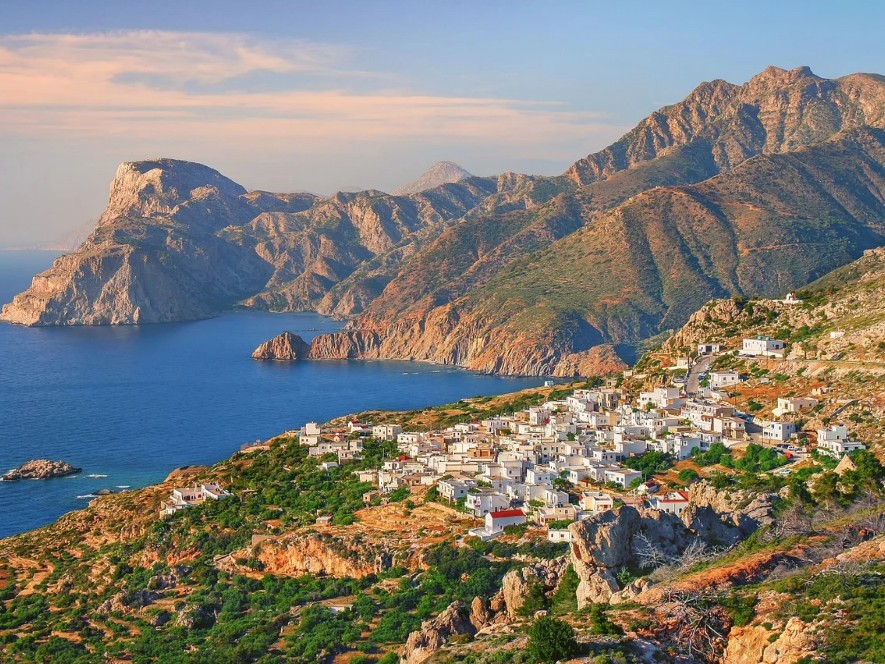
As we read on the website of the Municipality of Karpathos, women still keep traditions today. They knead and bake bread in traditional wood ovens, grind wheat and barley in mills and make local pasta named makarounes. Only with flour and water they create long cords, cut them into pieces and skillfully shape them with their fingers to get their characteristic, indented shape. They are traditionally served with “tsikomeno”, which is onion roasted in butter and sitaka, the local cheese of the island.
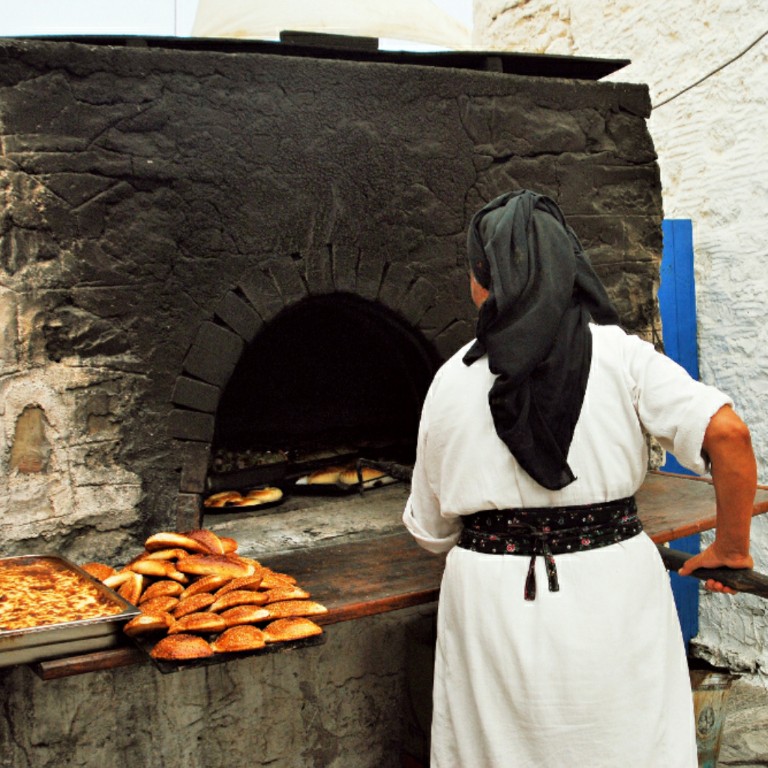
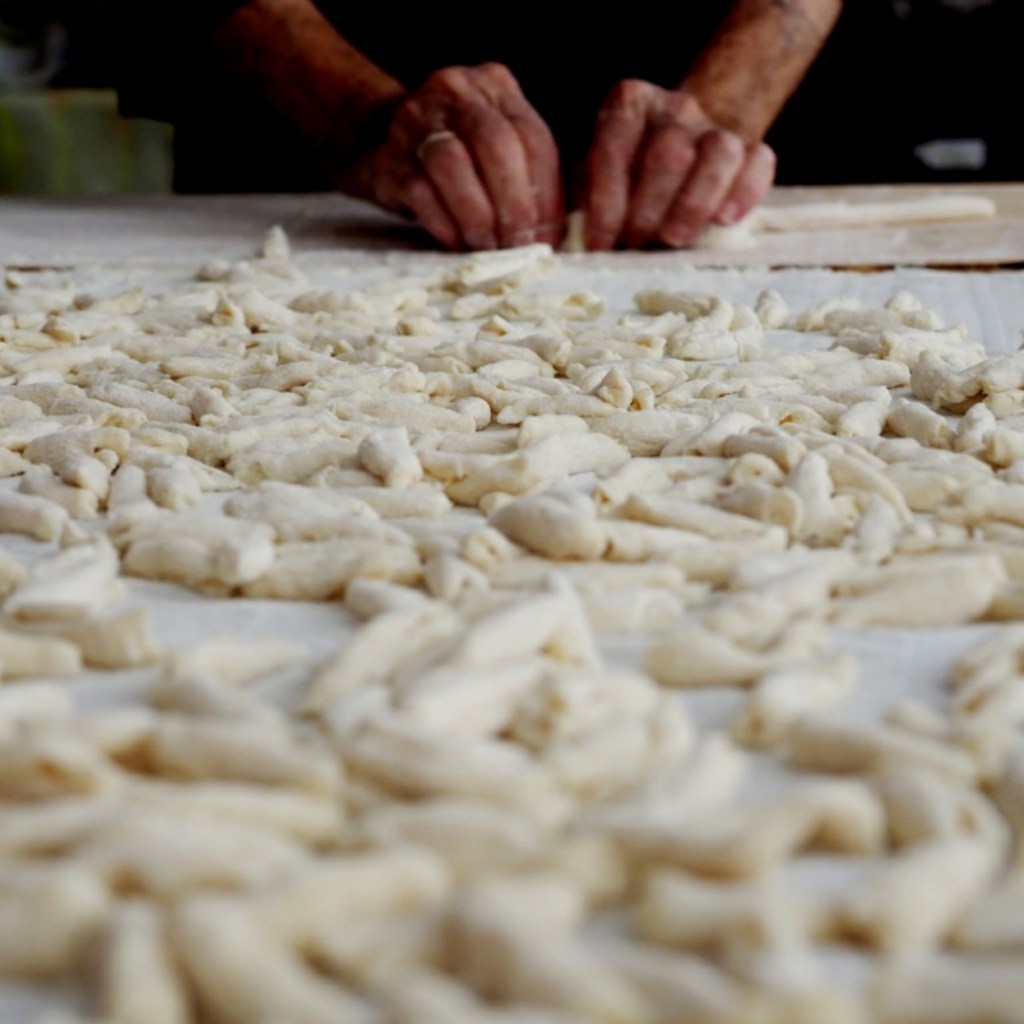
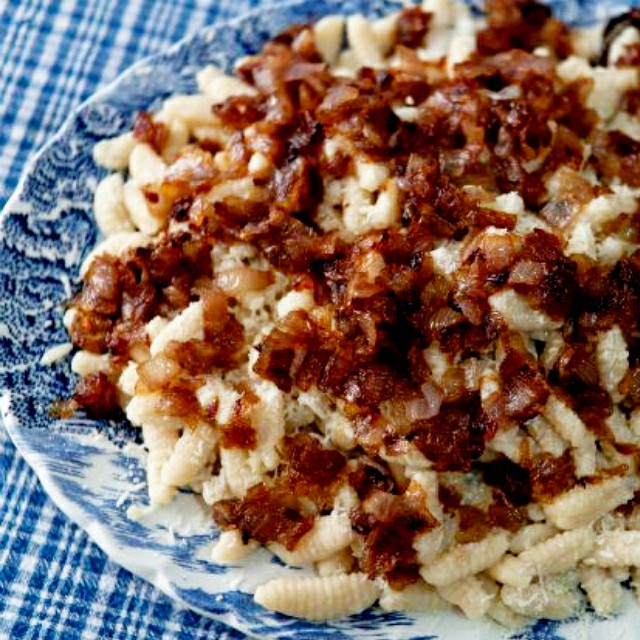
The island has scattered stone-built wood ovens in its villages. At Christmas in Karpathos, women bake the traditional Christmas bread, Christopsomo in Greek, while at Easter they bake the Easter vyzanti, goat or lamb stuffed mainly with rice, on Holy Saturday to be ready on Sunday, since it takes a long time to cook.

A description we found says that the lamb is marinated with a mixture of tomato paste, olive oil, salt and spices (pepper, cumin, very little cinnamon) and rubbed with half a lemon. The filling includes finely chopped sauté onion, liver with pepper, cumin, very little cinnamon, finely chopped dill, fennel, two mint leaves, celery, a couple of tablespoons of tomato paste and fresh tomatoes. All this simmers and a while later they add the rice. The lamb gets stuffed and baked for many hours in a clay pot in the neighborhood’s wood oven.
Karpathos has many pies to treat us… Onion pies, gra ie a pie with greens in a thick phyllo dough, kopeles (which means girls and is used in Olympos village while the rest of the island calls those pies lachanopitia), pies with spinach and leeks in winter, and greens and zucchini in summer. Here we see how wisely traditional cuisine uses local ingredients depending on the season and availability.
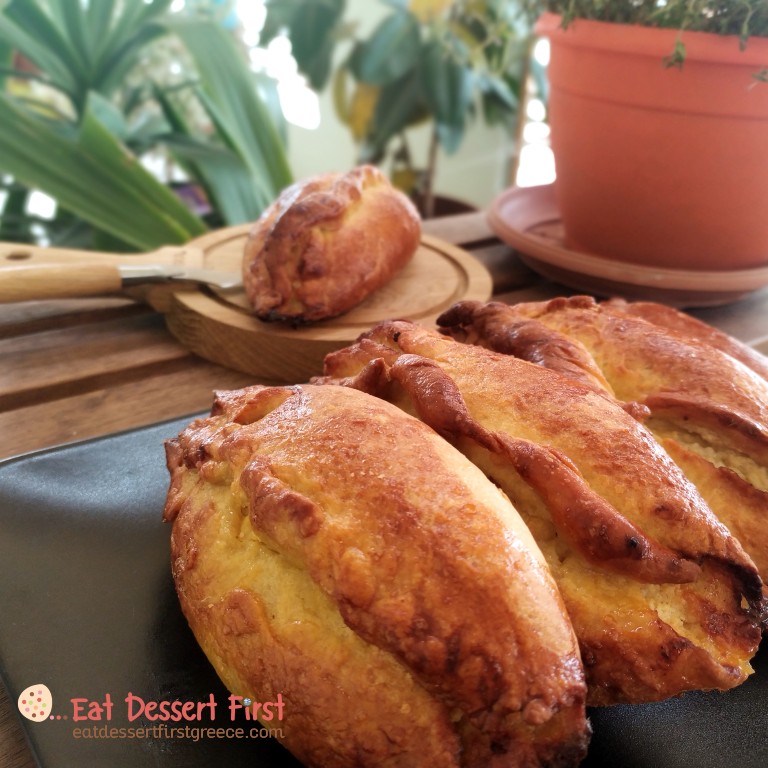
In the same way, traditional zibilia, sweets with raisin filling, are made from grapes that abound on the island and have been left over since they haven’t been consumed fresh or turned into wine. Another traditional zero waste practice, as we like saying! Zibilia are crescent-shaped pies stuffed with raisins and nutmeg, sprinkled with white and black sesame seeds, and of course baked in wood ovens.

Οther very impressive pastries of Karpathos are the wedding psilokouloura. They are made in a special way that gives them a stunning appearance: vertical and horizontal dough strings are placed onto a large, ring-shaped bun, to form a grid. Before getting baked in the wood oven, they are sprinkled with sesame seeds.
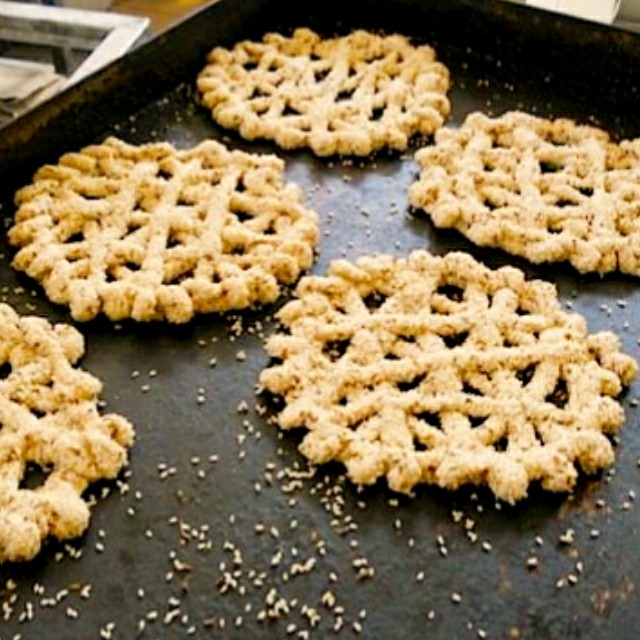
In traditional Carpathian weddings, they served chondros, a cooked wheat with meat and tomato. It can also be prepared with milk as a custard. One will also find it at the traditional festivals of the island. A sweet that decorates wedding tables is sousamomelo (meaning sesame honey), which, as we learned, symbolizes fertility and sweetness.
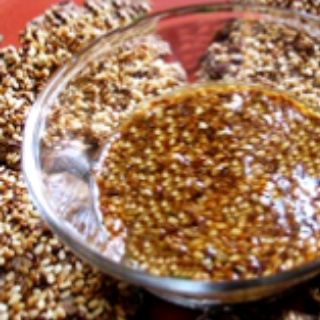
As mentioned on the website of the Municipality of Karpathos, the Karpathian baklava is also a sweet of joy. It is a simple phyllo dough rolled into a sheet, fried and then moistened in syrup -resembling Cretan diples more than traditional baklava. However, they also have the foreign baklava with almonds, walnuts and many phyllo sheets that make it very tall.
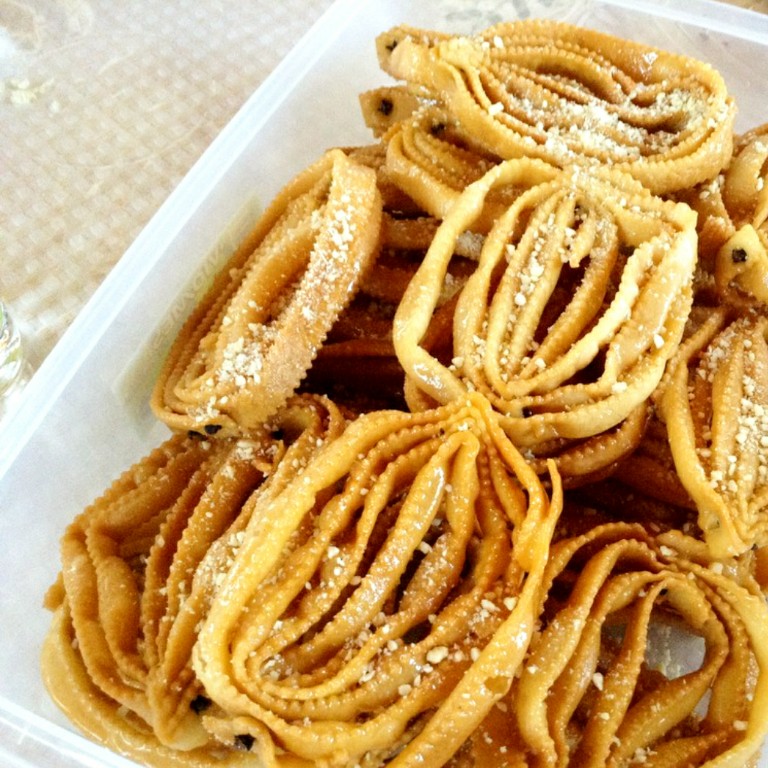

Another dessert that seemed delicious and one found in all the Dodecanese are moschopougia. They are crescents of dough filled with walnuts, almonds and sesame seeds, sprinkled with powder sugar, like Greek Christmas kourabiedes. One will find them on the islands in many variations.
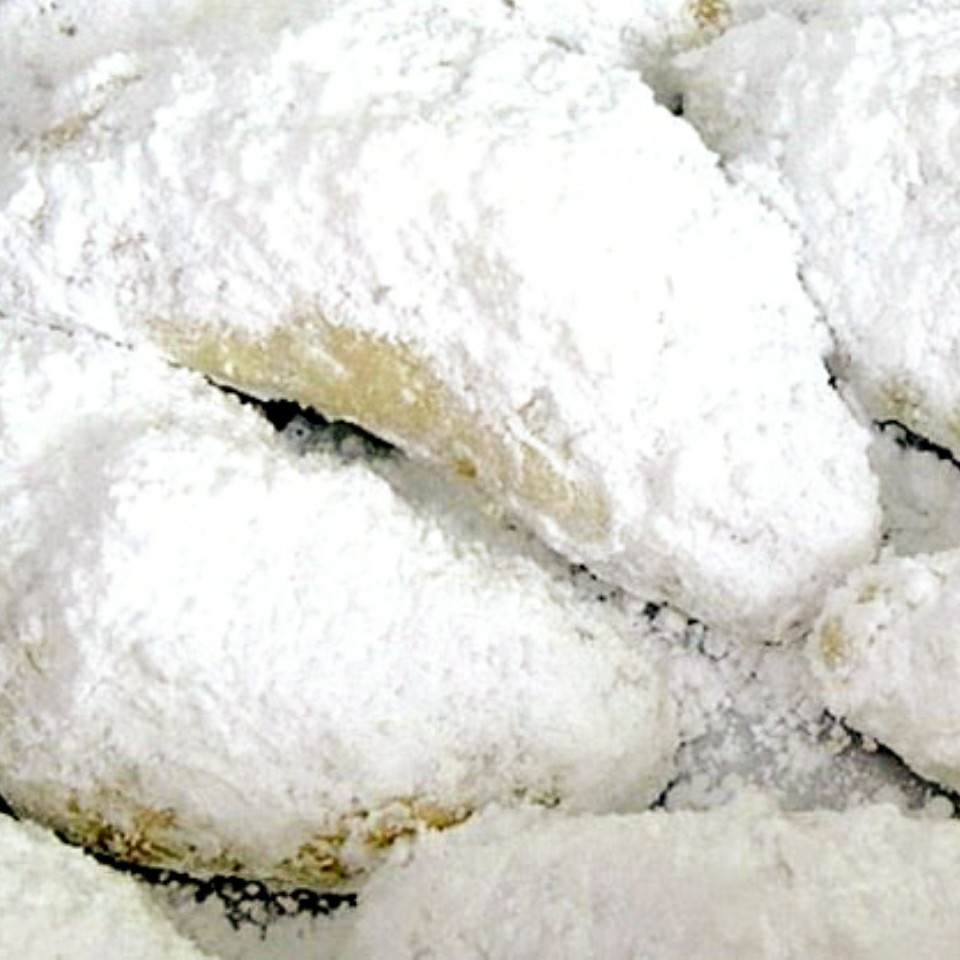

We therefore saw that the various types of dough are one of the island’s favorite treats. We found the Karpathian recipe that we decided to try in the excellent book by Cretan Kostis Kostakis entitled Handmade pies (2017) by Psychogios Publications. The book includes recipes for handmade pies from all over Greece, made with fresh and homemade ingredients, from simple, pure local materials, in a lighter version adapted to the new manners and to our intense lifestyle.
As Kostis Kostakis writes in his book, the pies we will make “come from the remote Karpathos island and specifically from the mountain village of Elympos. They are simple and frugal pies, with greens or mizithra of their production, which are baked in the wood oven. Very tasty, amazing in their simplicity “.
Karpathian pies
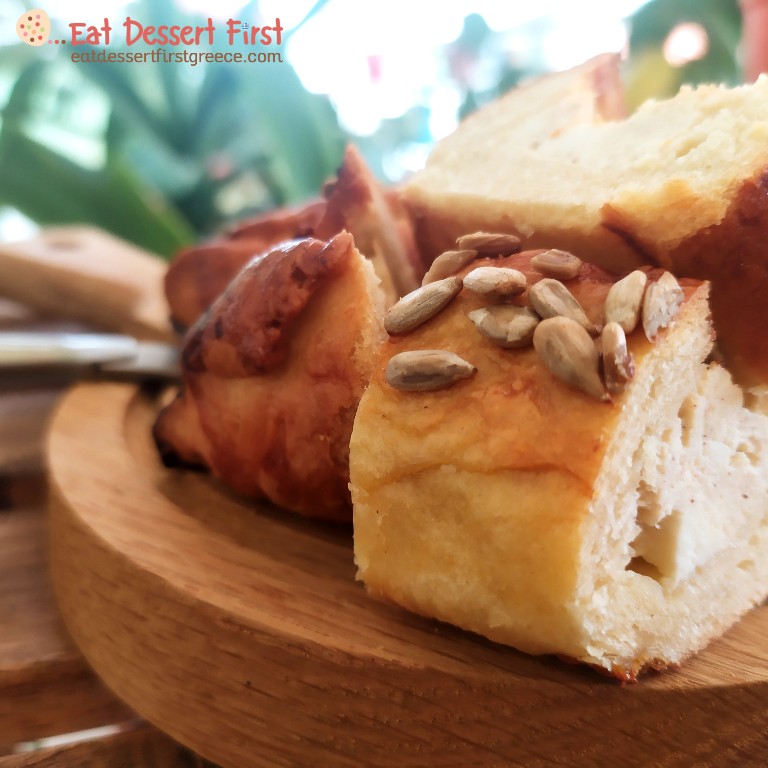
**We are translating the original recipe, as it is published in the book.
Ingredients for the Karpathian pies
| DOUGH |
| 500 gr bread flour |
| 500 yellow flour (type M in Greece) |
| 2 eggs |
| 18 gr instant dry yeast or 30 gr fresh yeast |
| 200 gr olive oil |
| 200 gr milk |
| water as much as it needs |
| 20 gr salt |
| EGG WASH |
| 2 yolks |
| some milk |
| sesame seeds |
| GREENS FILLING |
| 1 kilo various greens for pies (spinach, chard, dock, fennel, wild greens for pies in general) |
| 1 onion |
| 1 bunch of spring onions |
| 100 gr olive oil |
| 200 gr grated dry mizithra cheese (optional) |
| salt, pepper, cumin (optional) |
| MIZITHRA CHEESE FILLING |
| 1 kilo fresh mizithra cheese (anthotyro cheese) |
| 150 gr sugar |
| 150 gr honey |
| 2 eggs |
| 2 pinches vanilla powder |
| 1 tsp cinnamon |

Preparation: 1 hour / Baking: 30 minutes
Method
1. Pour all the ingredients into a bowl.
2. Knead until you make a pliable, soft dough. If you see that the dough is stiff, add water, little by little, until it becomes as soft as you want.
3. Let it rest and double in volume.
4. Wash and chop the greens and onions, and rub them with salt to remove their liquids.
5. Then add the olive oil, spices and mizithra cheese and mix well. (If you choose to fill the pies with cheese, mix all the ingredients very well -mizithra, sugar, honey, eggs, vanilla and cinnamon – to homogenize.)
6. Divide the dough into 80 gram portions and roll into round sheets.
7. Fill them with the mixture you have prepared, fold them into a crescent and turn the edges upwards to close them.
8. Whisk the milk with the eggs, spread onto the pies and sprinkle with sesame seeds.
9. Bake in a preheated oven at 180° on the fan mode for about half an hour until golden brown.
To make our dough, we poured all the ingredients (flour, salt, eggs, milk, olive oil, yeast) into a large bowl, being careful not to pour the yeast directly onto the salt because this would prevent its action!
A little secret!
We firstly mixed our ingredients with a fork, since in our experience this helps incorporating the ingredients better and prevents the dough from sticking to the walls of the bowl. In the same way you can mix the crumbly, buttery dough for tarts or pasta frollas.
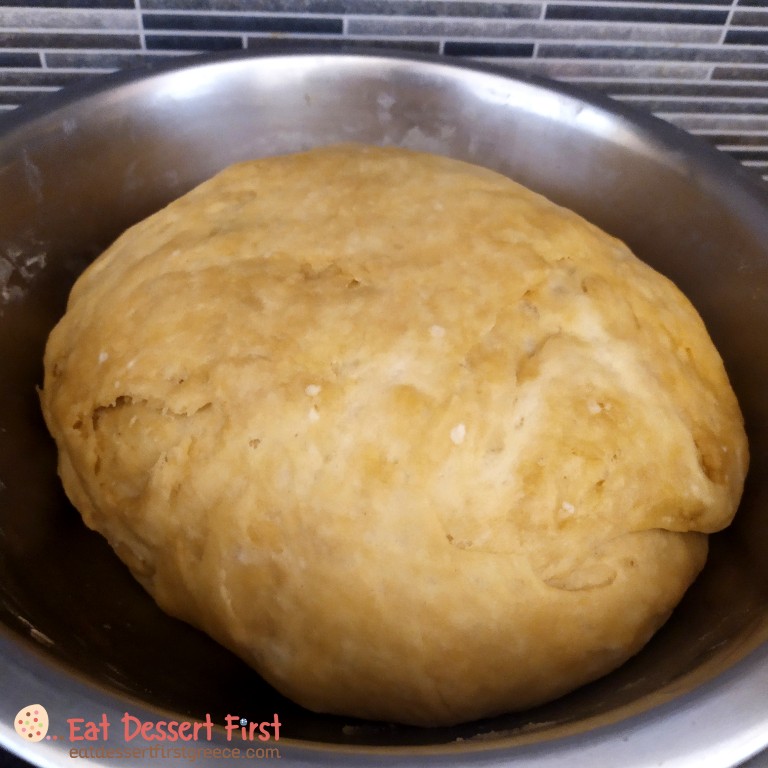
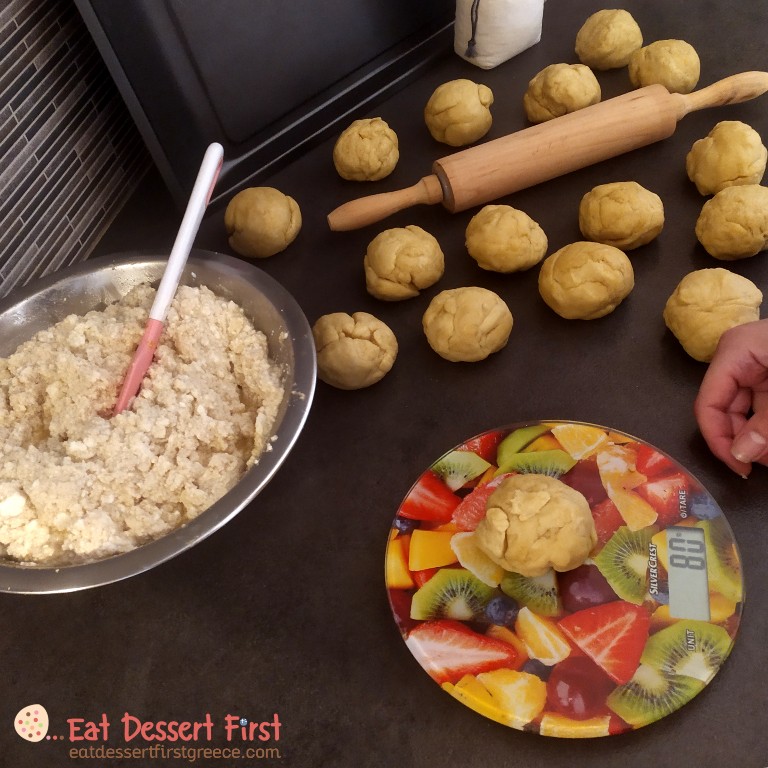
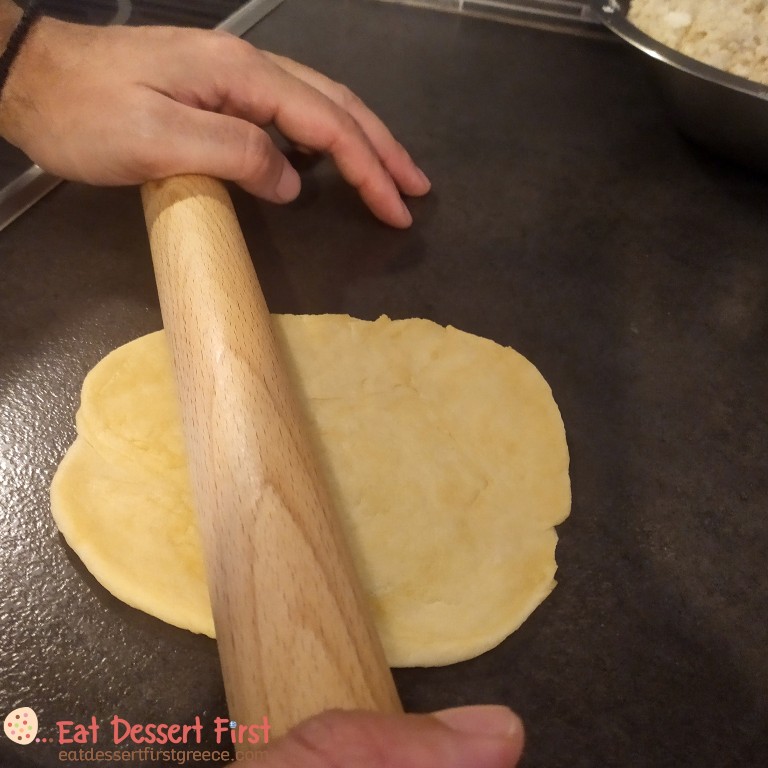
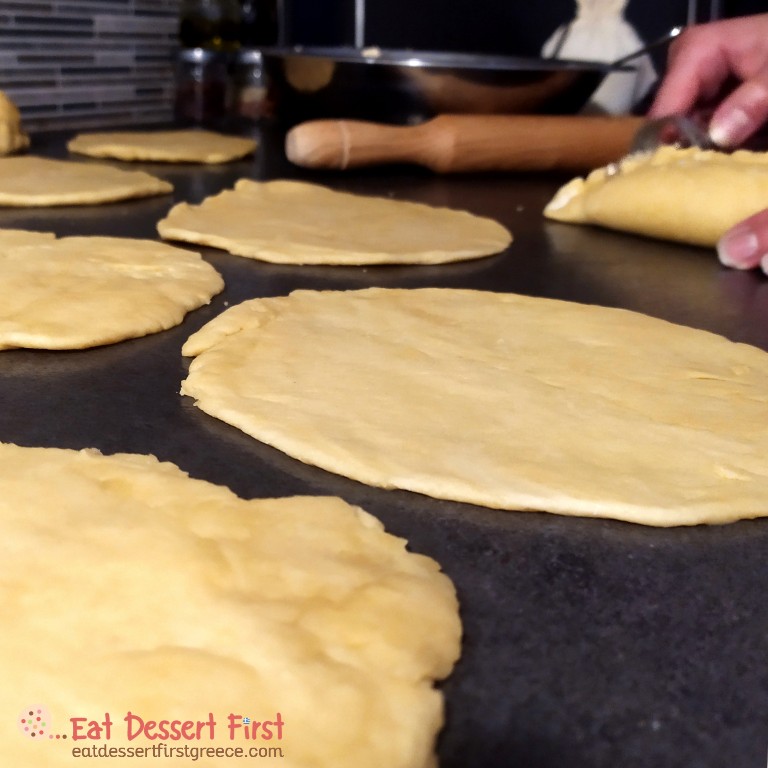

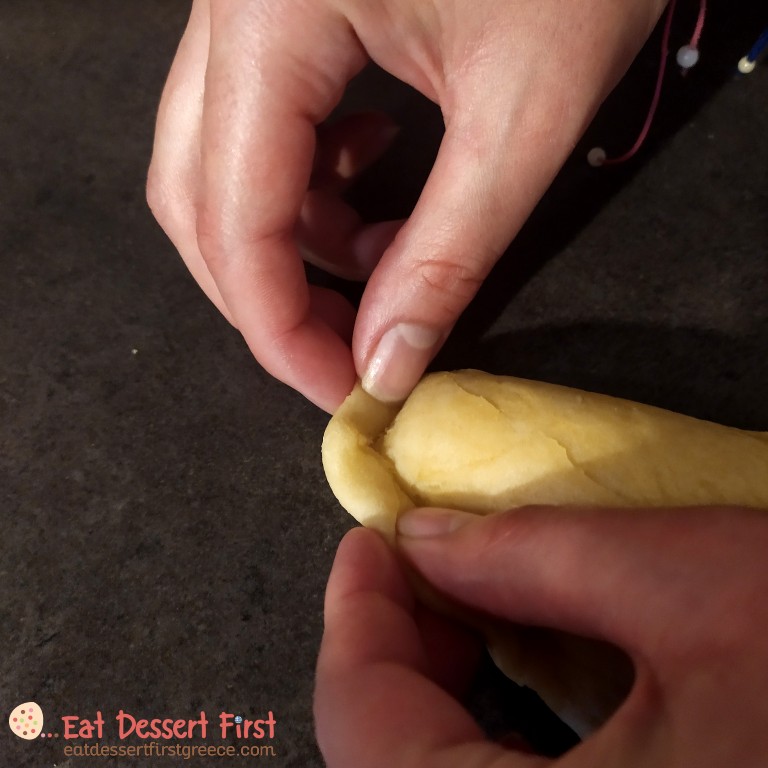
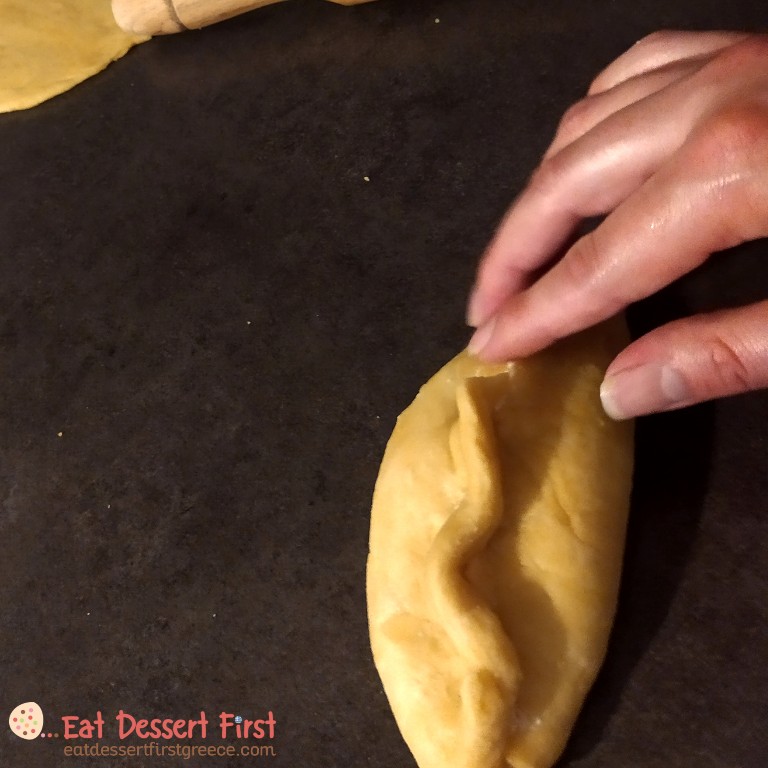
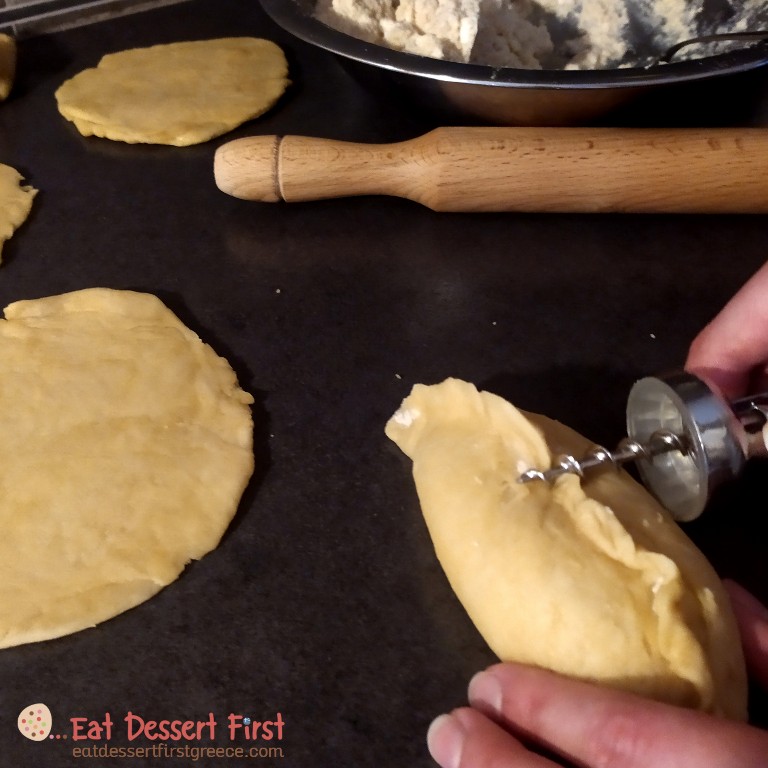

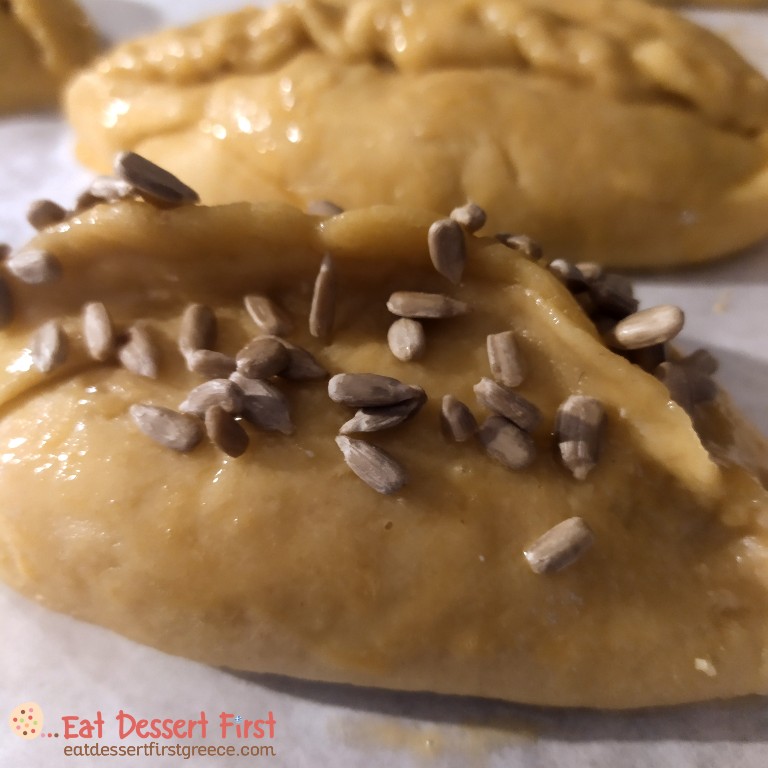


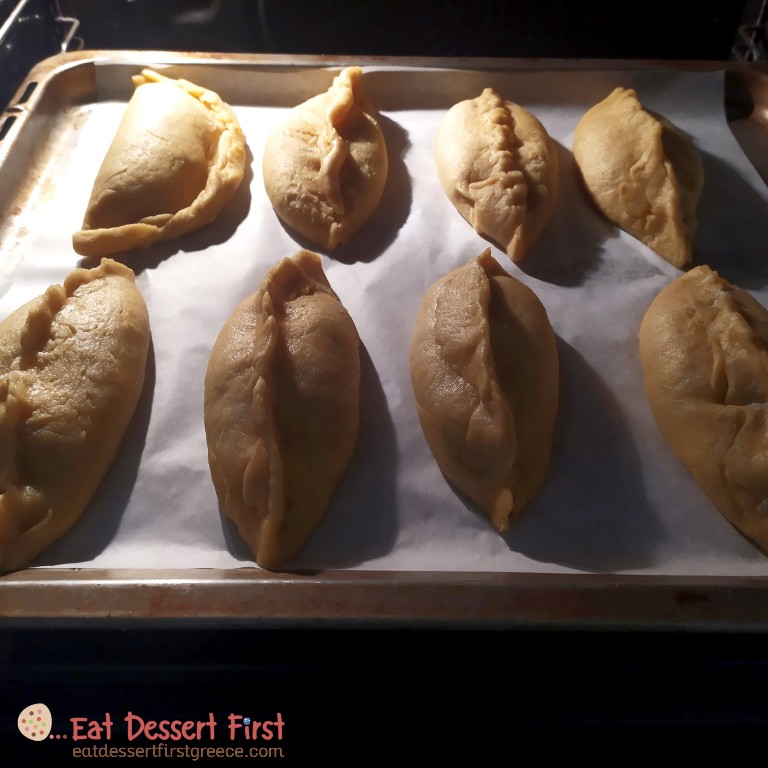
We warmly than Psychogios Publications for the books –Handmade pies and Sweet & Healthy– that they sent us so that we can try their recipes! Read also our article for the book Sweet & Healthy by Athina Panou!
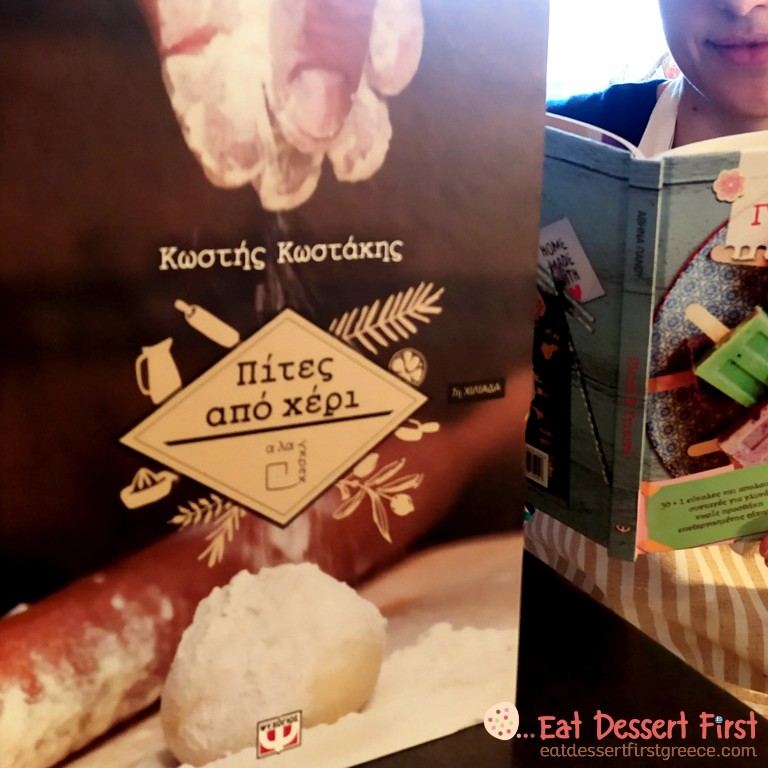
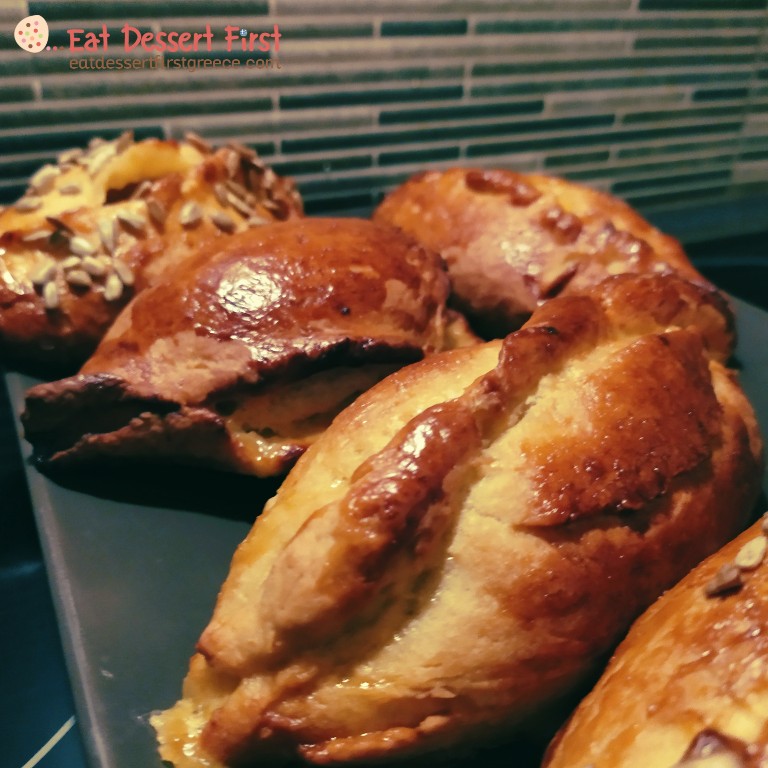
Have a nice kneading everyone and enjoy!



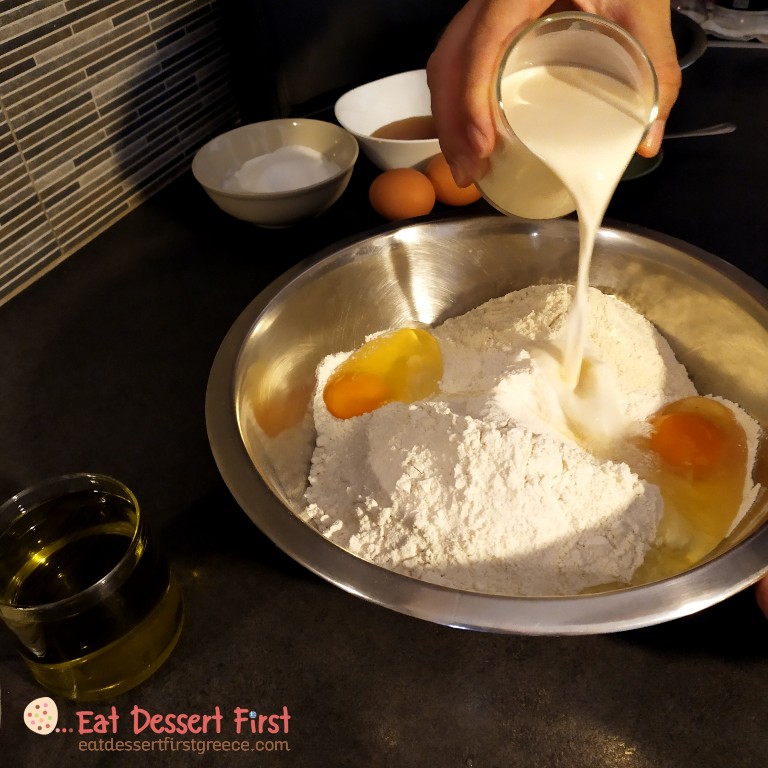
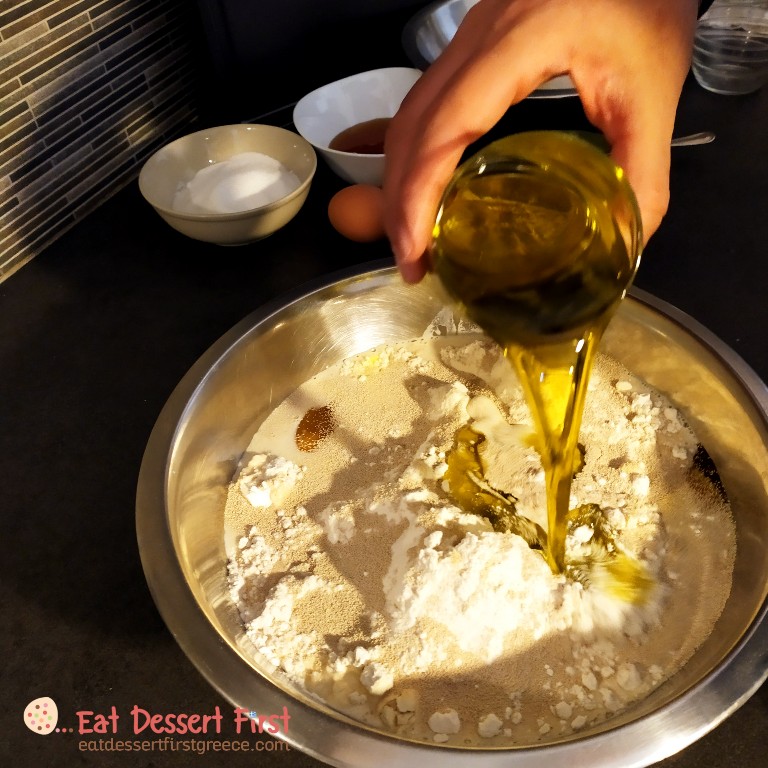
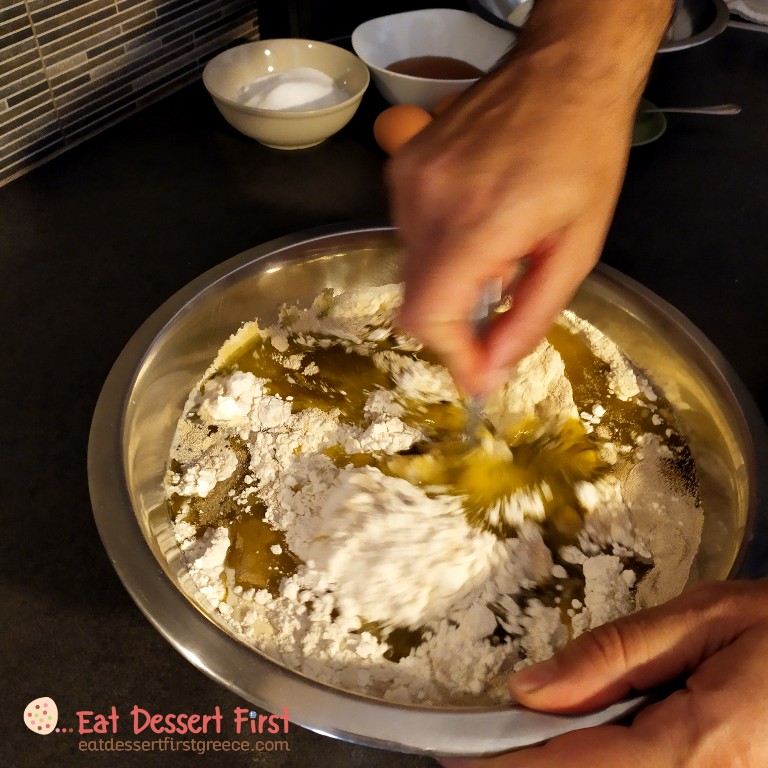
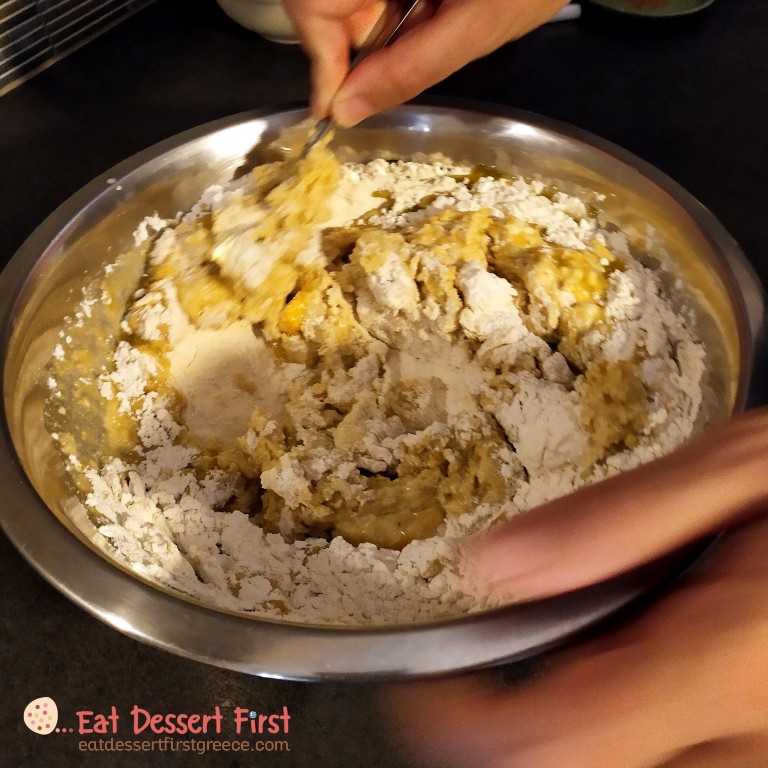
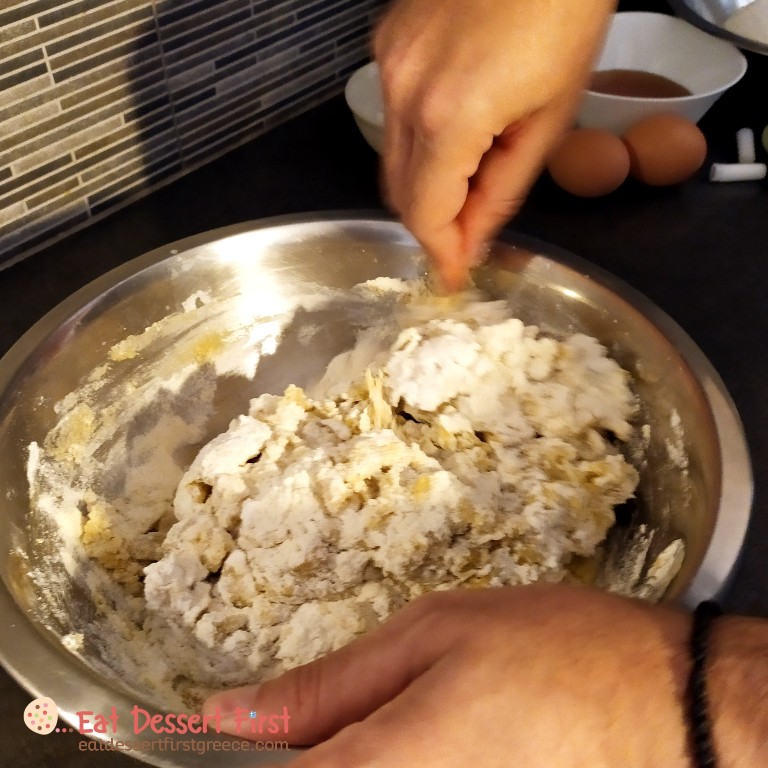



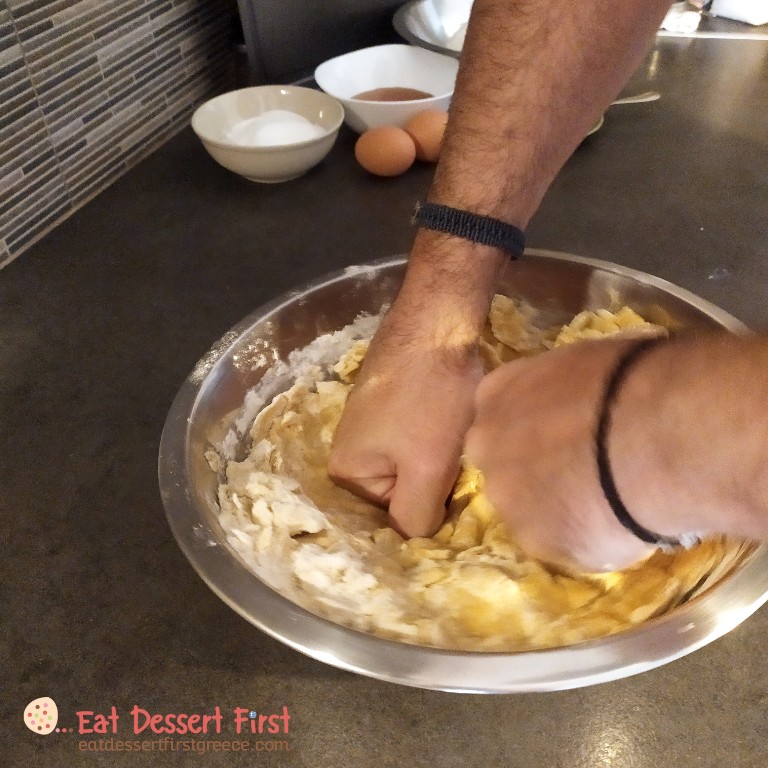
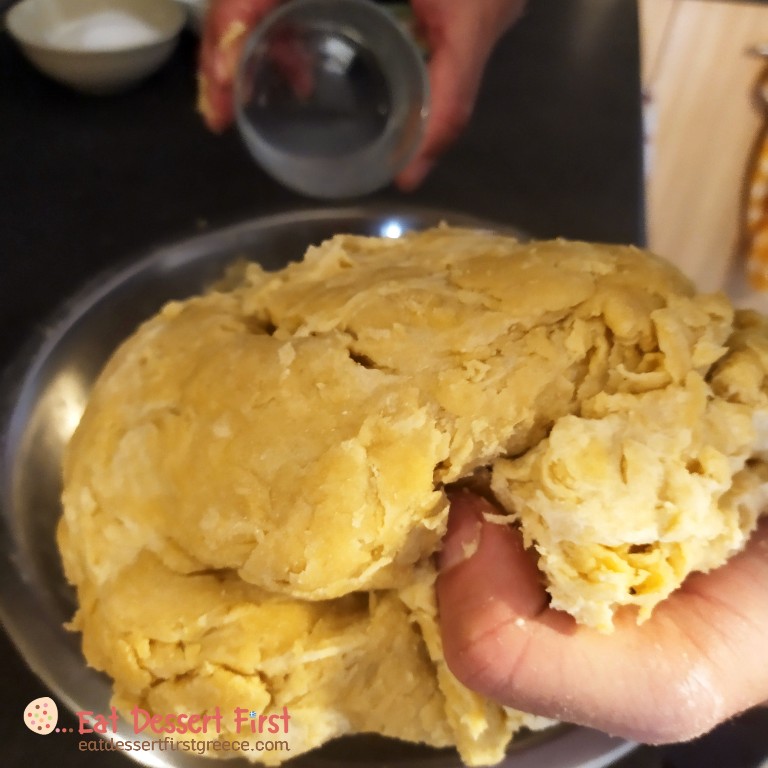
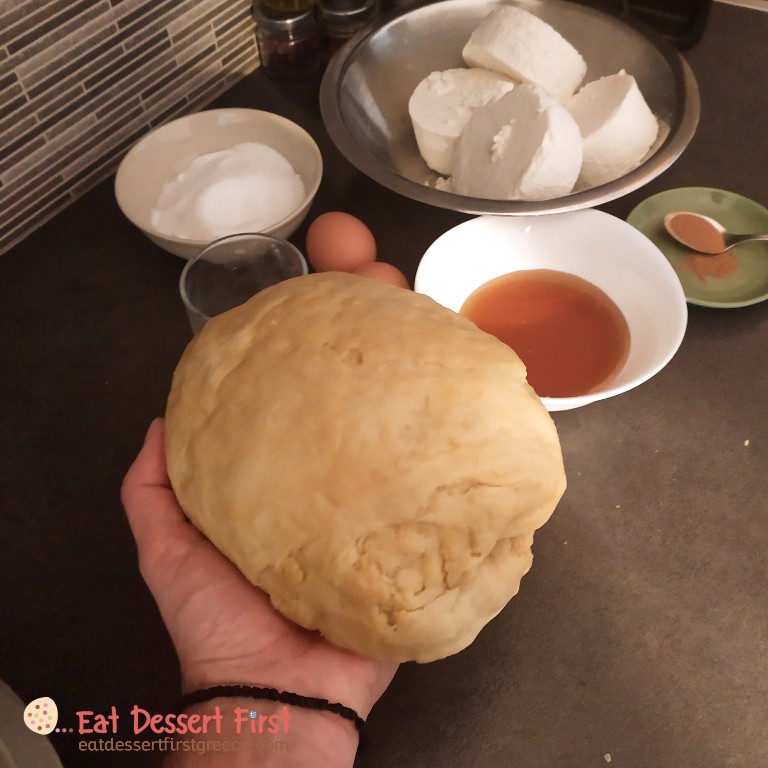

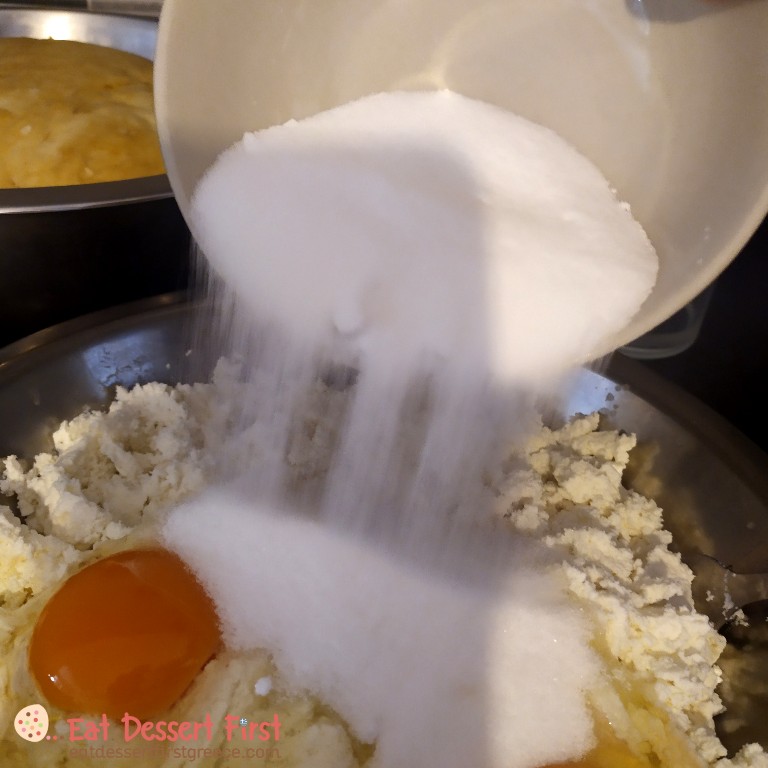

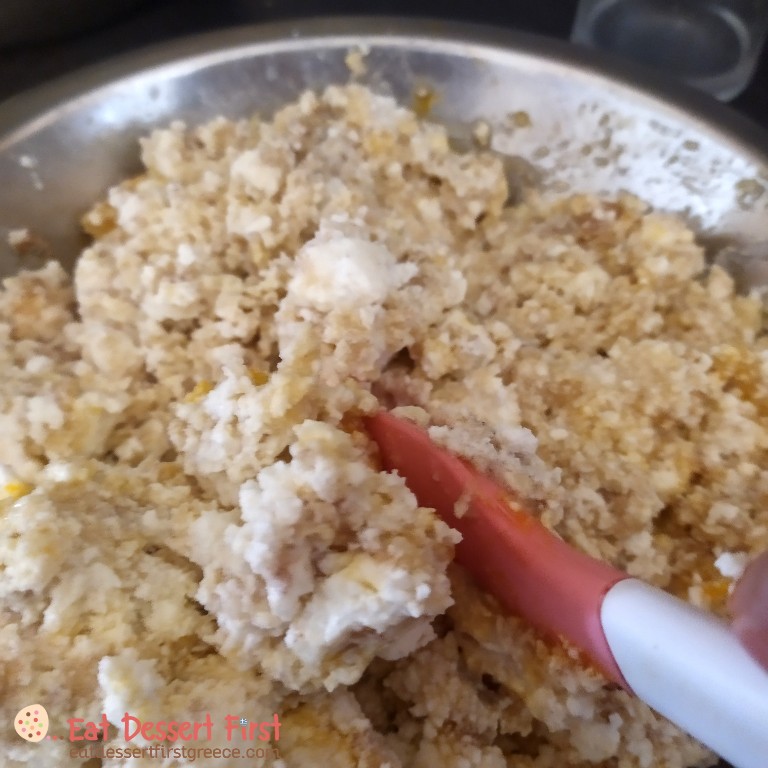
Lovely information about Karpathos island and a super recipe.
LikeLiked by 1 person
Thank you so much!! Greetings from Greece!
LikeLike
Mouth watering pictures!!
LikeLiked by 1 person
Thank you very much!!
LikeLiked by 1 person
You’re most welcome.
LikeLike
You really make me want to travel to Karpathos! Really nice post.
LikeLike
Looks SOOOO delicious! Thank You! 🙂
LikeLike